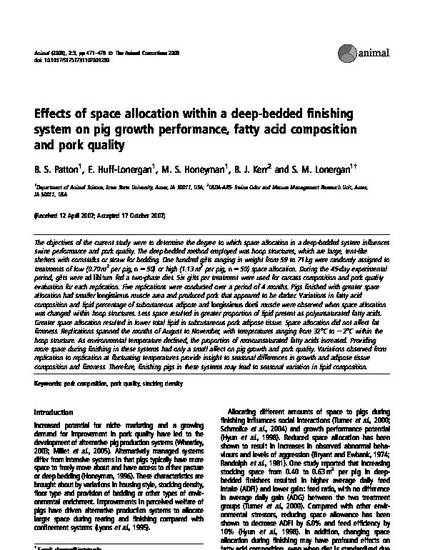
The objectives of the current study were to determine the degree to which space allocation in a deep-bedded system influences swine performance and pork quality. The deep-bedded method employed was hoop structures, which are large, tent-like shelters with cornstalks or straw for bedding. One hundred gilts ranging in weight from 59 to 71 kg were randomly assigned to treatments of low (0.70 m2 per pig, n = 50) or high (1.13 m2 per pig, n = 50) space allocation. During the 45-day experimental period, gilts were ad libitum fed a two-phase diet. Six gilts per treatment were used for carcass composition and pork quality evaluation for each replication. Five replications were conducted over a period of 4 months. Pigs finished with greater space allocation had smaller longissimusmuscle area and produced pork that appeared to be darker. Variations in fatty acid composition and lipid percentage of subcutaneous adipose and longissimus dorsi muscle were observed when space allocation was changed within hoop structures. Less space resulted in greater proportion of lipid present as polyunsaturated fatty acids. Greater space allocation resulted in lower total lipid in subcutaneous pork adipose tissue. Space allocation did not affect fat firmness. Replications spanned the months of August to November, with temperatures ranging from 32°C to −2°C within the hoop structure. As environmental temperature declined, the proportion of monounsaturated fatty acids increased. Providing more space during finishing in these systems had only a small affect on pig growth and pork quality. Variations observed from replication to replication at fluctuating temperatures provide insight to seasonal differences in growth and adipose tissue composition and firmness. Therefore, finishing pigs in these systems may lead to seasonal variation in lipid composition.
Available at: http://works.bepress.com/elisabeth_huff-lonergan/44/

This article is from Animal 2 (2008): 471–478, doi:10.1017/S1751731107001280. Posted with permission.